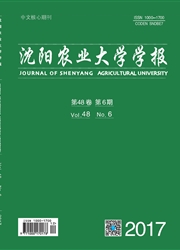

 中文摘要:
中文摘要:
分形理论为流域地貌形态等复杂体系的定量化研究提供了一种有效工具。以室内流域模型人工模拟降雨试验和高精度摄影测量获得的模型流域不同发育时段的数字高程模型(DEM)数据为基础,采用变分法计算了流域地貌形态分形维数,并对分形维数与地貌因子沟谷密度和地面割裂度的关系进行初步探讨。结果表明:流域地貌形态在无标度区间内具有良好的分形特征,分形维数准确的反映流域地貌表面的复杂程度:流域地貌形态在流域发育的不同时段具有不同的分形维数,并且与沟件密度和地面割裂度之间存在显著的线性关系:分形维数作为流域地貌形态分形特征的量化指标为黄土高原小流域侵蚀产沙预报模型中宏观地貌形态因子的选择提供了一种新的思路。
 英文摘要:
英文摘要:
Fractal theory provides an effective tool for quantitative study of some complex system such as watershed topographic feature. Based on DEM data of different development periods of a indoor watershed model obtained from the integration of artificial simulated rainfall experiment and high accuracy digital photogrammetry technique, the fractal dimensions of topographic feature under different development periods of the indoor watershed model based on variation method were calculated and the relationships between watershed topographic feature fractal dimension and topographic factors such as watershed gully density as well as ground lacerative degree was discussed preliminarily, The results in the paper indicated that, watershed topographic feature possess good fractal characteristics in the non-scale range, which indicates that fractal dimension truly reflect the complexity degree of watershed geomorphology surface. In addition, watershed topographic feature fractal dimensions under different development periods of the indoor watershed model were different and there existed a significant linear relationship between watershed topographic feature fractal dimension and topographic factors such as watershed gully density as well as ground lacerative degree respectively. Being a watershed topographic feature fractal characteristics, fractal dimension based on variational method provides a new approach for choosing reasonable macroscopical topographic feature factors which could be used in establishing a good soil erosion prediction model for small watershed on Loess Plateau.
 同期刊论文项目
同期刊论文项目
 同项目期刊论文
同项目期刊论文
 期刊信息
期刊信息
